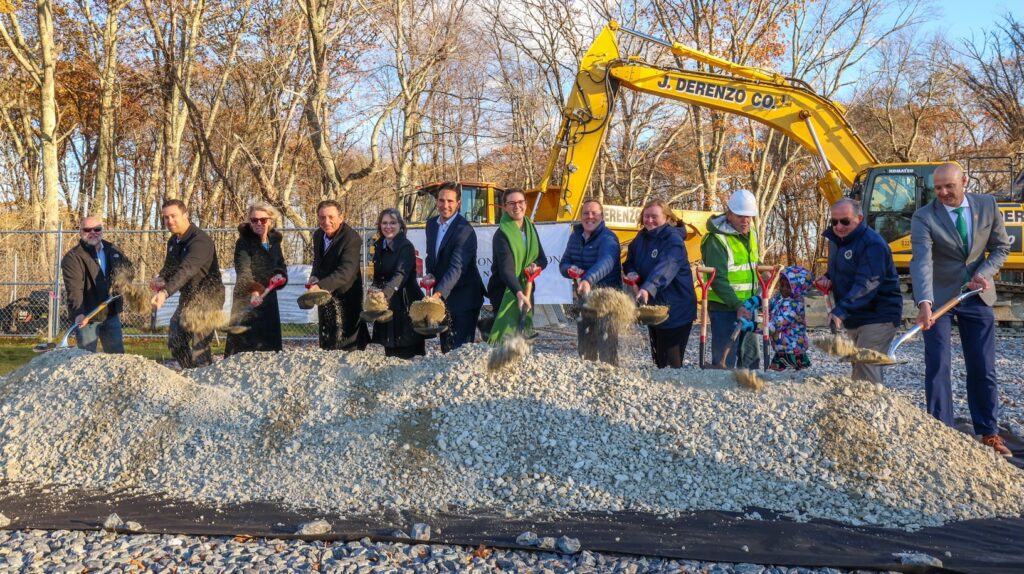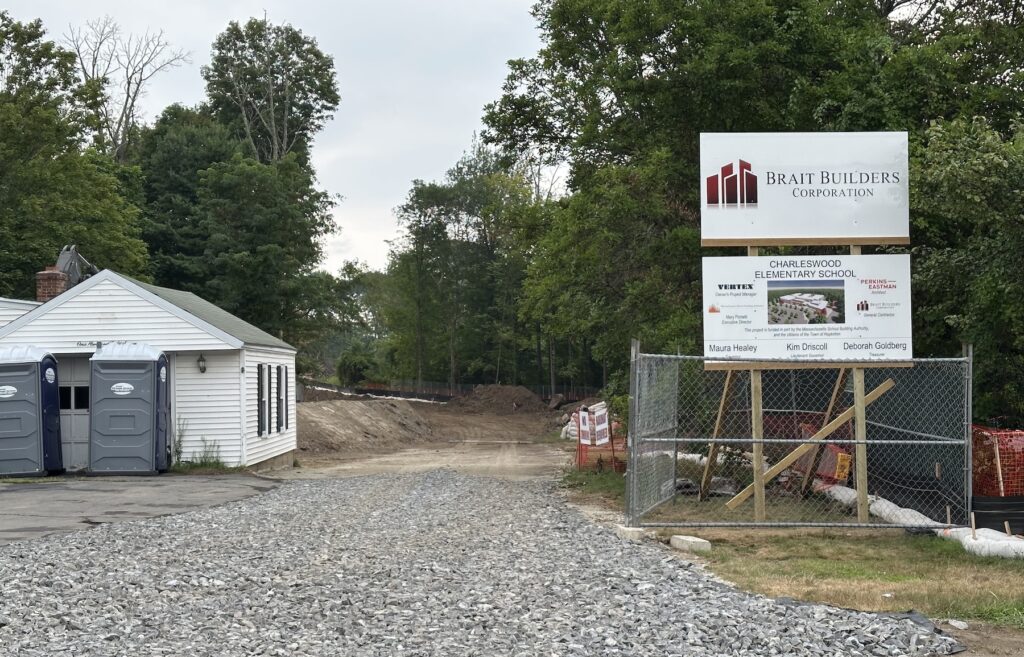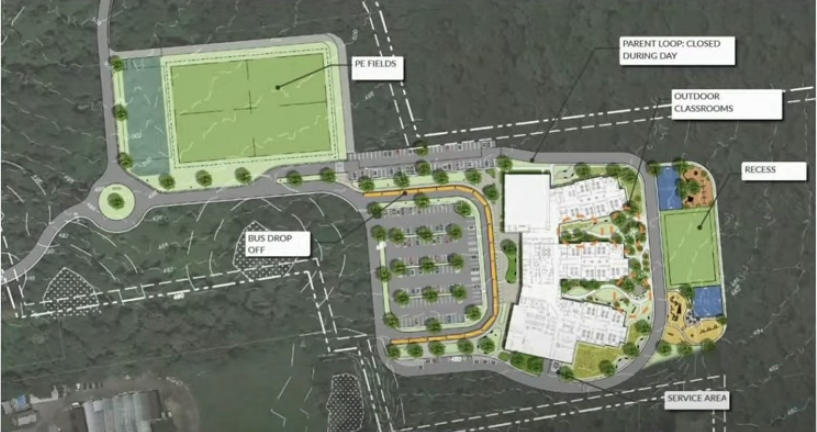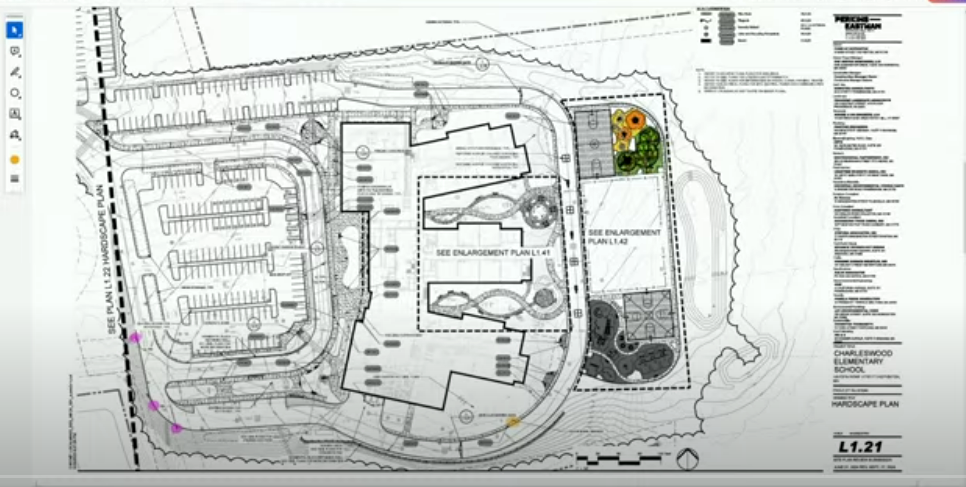The Elementary School Building Committee working on the proposed Charleswood School expects to meet with the Conservation Commission on Jan. 28 to discuss road improvements for the project.
At ESBC’s Tuesday meeting, Vertex project manager Chris Eberly said an earlier scheduled meeting in January was continued to allow the team time to receive information from the peer reviewer.
Eberly explained that street improvements are separately permitted and considered town right-of-way improvements. Traffic and work in the wetlands buffer zone are issues to be addressed.
He said one matter resolved with the town was the Conservation Commission’s request the project go into private land to remove invasive species. Eberly said the town’s DPW “does not engage” with private residences and deals with species through the town’s invasive management plan.
Another issue is the Conservation Commission’s request to add curbing in the widened lane area. Eberly said the intent is to gather runoff in a catch basin, distribute it into pipes and direct it into wetlands.
This method is “opposed to community drainage,” which involves water running off roads into wetlands, Eberly explained.
ESBC chair Jon Graziano noted, “The DPW is not a big fan of the curbing idea.”
Eberly added, “They agreed with us it is a lot of money for not much impact. It does not create a significant improvement in the situation for what is an added maintenance item.”
He said if the Conservation Commission requires the option, it will add $50,000 to the street improvement costs.
“It is one point of discussion expected,” Eberly said.
‘For sale’ signs appear on abutters’ properties
An update was provided regarding efforts for mitigation with abutters.
Eberly said there still are a few people who have been non-responsive. He said Vertex will draft more letters to them before compiling the information they have and incorporating it into the construction project.
Graziano and board member Mike Shepard have been spearheading the outreach. Graziano said their efforts are “complicated by the fact several houses in the corridor have had ‘For sale’ signs go up in the last few weeks.”
The committee chair said members would continue to reach out and talk to the current owners about mitigation, but they cannot project what future owners may be looking for in terms of mitigation.
“We’ll do everything we can to make sure it is as unaffected as possible,” he said.
Geothermal wells addressed
Dan Colli, architect Perkins Eastman’s project manager, reported on geothermal wells, saying there will be 116 wells (one previously drilled, 115 to be done), 550 feet deep instead of 600, resulting in a small savings because of fewer wells with less depth.
He said the engineer feels this plan will be sufficient to support the building as well as any potential additions in the future.
Colli explained bidding for the work would be included in the overall bid for a general contractor. In response to a question from ESBC member Bill Flannery about bids, Colli said it is highly likely the contract for geothermal wells will go to Skillings and Sons, the same entity doing that work on the Hopkins School addition.
Eberly clarified that possibility is based on having received pricing when bids came in for the Hopkins School work. He feels Skillings and Sons, who also did the Charleswood test well, would have a more aggressive approach, more confidence and “first-hand experience.”
ESBC member Chris Masters, who is the School Committee representative, asked what the difference is between wells for homes and geothermal wells.
Colli said there is no maintenance required on this “closed system,” and it can last up to 50 years.
Eberly explained that a pipe is put deep into the ground, and water is circulated through and allows for heat transfer.
“Heat pumps move hot air on hot days into the well and heat from the well into cold rooms in the winter,” he said.
Furniture, finances reviewed
In other business, Eberly reported that $1,721,515 had been budgeted for technology a year ago, when Town Meeting approved the project. Current calculations from the consultant have that total at $1,626,271.
Eberly said procurement of items would take place at the midpoint of construction or later, but the technology is in “a good place overall.”
Regarding the furniture, fixtures and equipment (FF&E) budget, he said Elmwood Principal David Brauninger had reviewed information with teachers and staff and recommended they “move forward” with requests for individual teacher desks as well as podiums and mobile mailboxes and mobile bookshelves at all three grade levels.
Those items will be incorporated into planning, but the “forecasted” budget numbers will stay the same, Eberly said. He said the procurement of FF&E would take place in 1 1/2 to two years, and the budget would be reconciled later.
He said the project has been running under budget to date, and there is sufficient money in contingency to cover costs.


















0 Comments